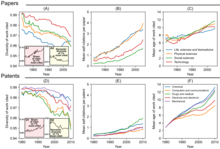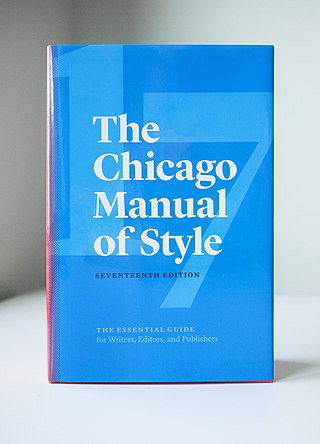
The Chicago Manual of Style is a style guide for American English published since 1906 by the University of Chicago Press. Its 17 editions have prescribed writing and citation styles widely used in publishing.

Scientific citation is providing detailed reference in a scientific publication, typically a paper or book, to previous published communications which have a bearing on the subject of the new publication. The purpose of citations in original work is to allow readers of the paper to refer to cited work to assist them in judging the new work, source background information vital for future development, and acknowledge the contributions of earlier workers. Citations in, say, a review paper bring together many sources, often recent, in one place.

APA style is a writing style and format for academic documents such as scholarly journal articles and books. It is commonly used for citing sources within the field of behavioral and social sciences, including sociology, education, nursing, criminal justice, and anthropology, as well as psychology. It is described in the style guide of the American Psychological Association (APA), which is titled the Publication Manual of the American Psychological Association. The guidelines were developed to aid reading comprehension in the social and behavioral sciences, for clarity of communication, and for "word choice that best reduces bias in language". APA style is widely used, either entirely or with modifications, by hundreds of other scientific journals, in many textbooks, and in academia. The current edition is its seventh revision.
Reference management software, citation management software, or bibliographic management software is software that stores a database of bibliographic records and produces bibliographic citations (references) for those records, needed in scholarly research. Once a record has been stored, it can be used time and again in generating bibliographies, such as lists of references in scholarly books and articles. Modern reference management applications can usually be integrated with word processors so that a reference list in one of the many different bibliographic formats required by publishers and scholarly journals is produced automatically as an article is written, reducing the risk that a cited source is not included in the reference list. They will also have a facility for importing bibliographic records from bibliographic databases.
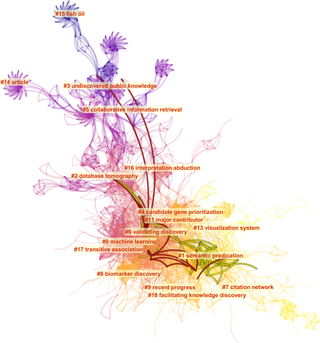
Bibliometrics is the application of statistical methods to the study of bibliographic data, especially in scientific and library and information science contexts, and is closely associated with scientometrics to the point that both fields largely overlap.
Scientometrics is a subfield of informetrics that studies quantitative aspects of scholarly literature. Major research issues include the measurement of the impact of research papers and academic journals, the understanding of scientific citations, and the use of such measurements in policy and management contexts. In practice there is a significant overlap between scientometrics and other scientific fields such as information systems, information science, science of science policy, sociology of science, and metascience. Critics have argued that overreliance on scientometrics has created a system of perverse incentives, producing a publish or perish environment that leads to low-quality research.
Citation analysis is the examination of the frequency, patterns, and graphs of citations in documents. It uses the directed graph of citations — links from one document to another document — to reveal properties of the documents. A typical aim would be to identify the most important documents in a collection. A classic example is that of the citations between academic articles and books. For another example, judges of law support their judgements by referring back to judgements made in earlier cases. An additional example is provided by patents which contain prior art, citation of earlier patents relevant to the current claim. The digitization of patent data and increasing computing power have led to a community of practice that uses these citation data to measure innovation attributes, trace knowledge flows, and map innovation networks.
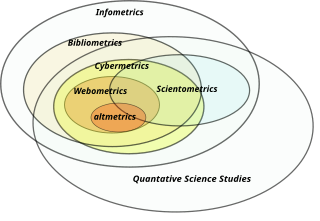
Informetrics is the study of quantitative aspects of information, it is an extension and evolution of traditional bibliometrics and scientometrics. Informetrics uses bibliometrics and scientometrics methods to study mainly the problems of literature information management and evaluation of science and technology. Informetrics is an independent discipline that uses quantitative methods from mathematics and statistics to study the process, phenomena, and law of informetrics. Informetrics has gained more attention as it is a common scientific method for academic evaluation, research hotspots in discipline, and trend analysis.
Parenthetical referencing is a citation system in which in-text citations are made using parentheses. They are usually accompanied by a full, alphabetized list of citations in an end section, usually titled "references", "reference list", "works cited", or "end-text citations". Parenthetical referencing can be used in lieu of footnote citations.
Citation impact or citation rate is a measure of how many times an academic journal article or book or author is cited by other articles, books or authors. Citation counts are interpreted as measures of the impact or influence of academic work and have given rise to the field of bibliometrics or scientometrics, specializing in the study of patterns of academic impact through citation analysis. The importance of journals can be measured by the average citation rate, the ratio of number of citations to number articles published within a given time period and in a given index, such as the journal impact factor or the citescore. It is used by academic institutions in decisions about academic tenure, promotion and hiring, and hence also used by authors in deciding which journal to publish in. Citation-like measures are also used in other fields that do ranking, such as Google's PageRank algorithm, software metrics, college and university rankings, and business performance indicators.
Bibliographic coupling, like co-citation, is a similarity measure that uses citation analysis to establish a similarity relationship between documents. Bibliographic coupling occurs when two works reference a common third work in their bibliographies. It is an indication that a probability exists that the two works treat a related subject matter.
ASA style is a widely accepted format for writing university research papers in the field of sociology. It specifies the arrangement and punctuation of footnotes and bibliographies. Standards for ASA style are specified in the ASA Style Guide, which is published by the American Sociological Association, the main scholarly organization for academic sociologists in the United States. The ASA Style Guide, published by the American Sociological Association, is designed to aid authors preparing manuscripts for ASA journals and publications.
The h-index is an author-level metric that measures both the productivity and citation impact of the publications, initially used for an individual scientist or scholar. The h-index correlates with success indicators such as winning the Nobel Prize, being accepted for research fellowships and holding positions at top universities. The index is based on the set of the scientist's most cited papers and the number of citations that they have received in other publications. The index has more recently been applied to the productivity and impact of a scholarly journal as well as a group of scientists, such as a department or university or country. The index was suggested in 2005 by Jorge E. Hirsch, a physicist at UC San Diego, as a tool for determining theoretical physicists' relative quality and is sometimes called the Hirsch index or Hirsch number.
Scientific writing is writing about science, with an implication that the writing is by scientists and for an audience that primarily includes peers—those with sufficient expertise to follow in detail. Scientific writing is a specialized form of technical writing, and a prominent genre of it involves reporting about scientific studies such as in articles for a scientific journal. Other scientific writing genres include writing literature-review articles, which summarize the existing state of a given aspect of a scientific field, and writing grant proposals, which are a common means of obtaining funding to support scientific research. Scientific writing is more likely to focus on the pure sciences compared to other aspects of technical communication that are more applied, although there is overlap. There is not one specific style for citations and references in scientific writing. Whether you are submitting a grant proposal, literature review articles, or submitting an article into a paper, the citation system that must be used will depend on the publication you plan to submit to.
ResearcherID is an identifying system for scientific authors. The system was introduced in January 2008 by Thomson Reuters Corporation.
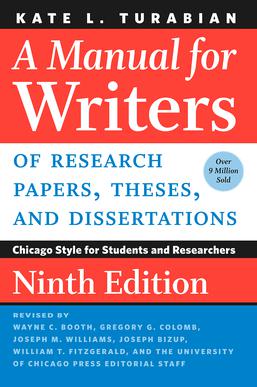
A Manual for Writers of Research Papers, Theses, and Dissertations is a style guide for writing and formatting research papers, theses, and dissertations and is published by the University of Chicago Press.
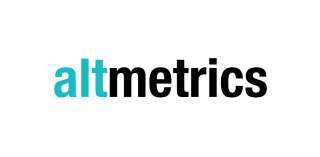
In scholarly and scientific publishing, altmetrics are non-traditional bibliometrics proposed as an alternative or complement to more traditional citation impact metrics, such as impact factor and h-index. The term altmetrics was proposed in 2010, as a generalization of article level metrics, and has its roots in the #altmetrics hashtag. Although altmetrics are often thought of as metrics about articles, they can be applied to people, journals, books, data sets, presentations, videos, source code repositories, web pages, etc.
Author-level metrics are citation metrics that measure the bibliometric impact of individual authors, researchers, academics, and scholars. Many metrics have been developed that take into account varying numbers of factors.
Metascience is the use of scientific methodology to study science itself. Metascience seeks to increase the quality of scientific research while reducing inefficiency. It is also known as "research on research" and "the science of science", as it uses research methods to study how research is done and find where improvements can be made. Metascience concerns itself with all fields of research and has been described as "a bird's eye view of science". In the words of John Ioannidis, "Science is the best thing that has happened to human beings ... but we can do it better."
The Leiden Manifesto for research metrics (LM) is a list of "ten principles to guide research evaluation", published as a comment in Volume 520, Issue 7548 of Nature, on 22 April 2015. It was formulated by public policy professor Diana Hicks, scientometrics professor Paul Wouters, and their colleagues at the 19th International Conference on Science and Technology Indicators, held between 3–5 September 2014 in Leiden, The Netherlands.

![xkcd webcomic titled "Wikipedian Protester". The sign says: "[CITATION NEEDED]". Webcomic xkcd - Wikipedian protester - English.svg](http://upload.wikimedia.org/wikipedia/commons/thumb/a/aa/Webcomic_xkcd_-_Wikipedian_protester_-_English.svg/250px-Webcomic_xkcd_-_Wikipedian_protester_-_English.svg.png)
